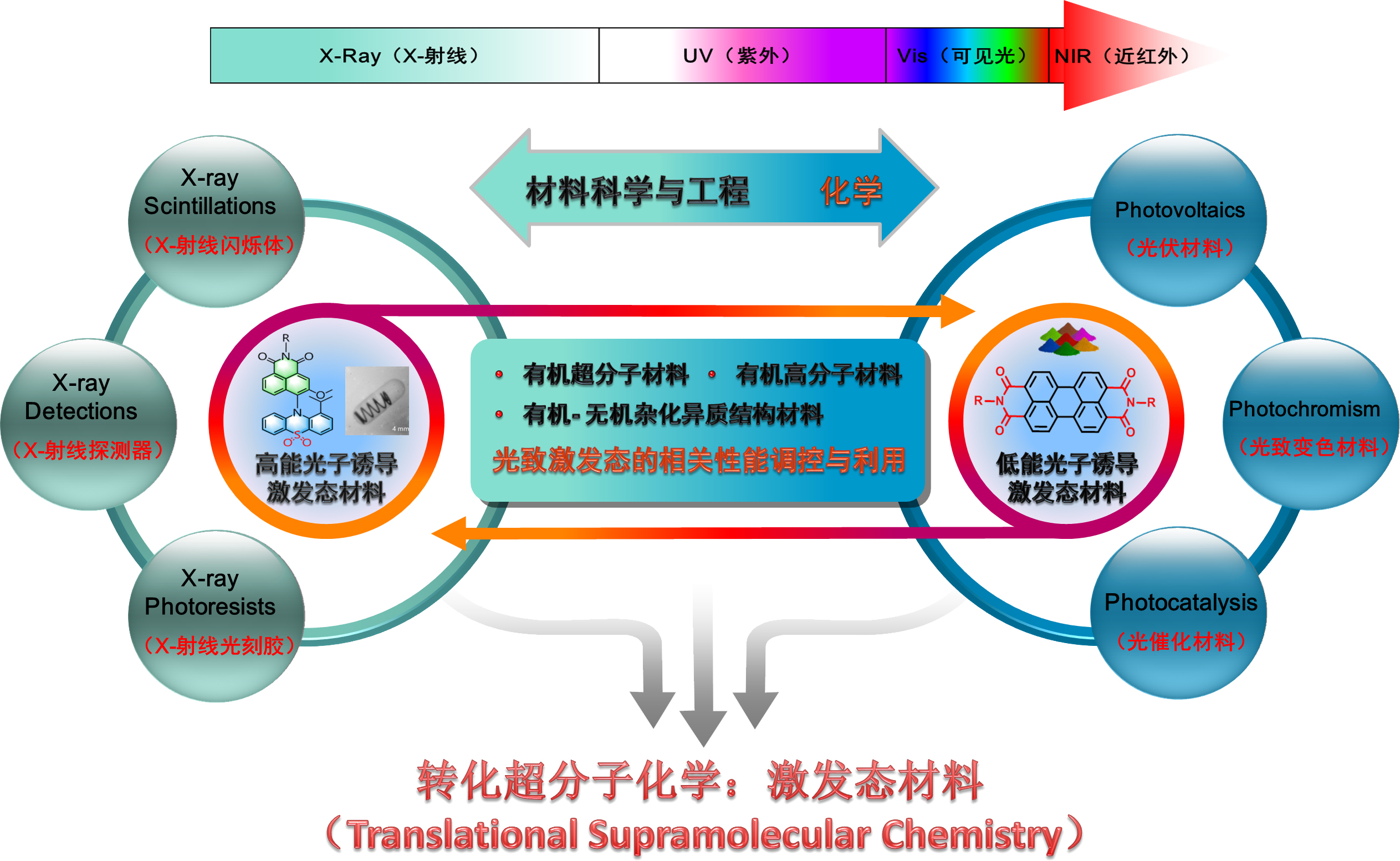Research Interests
信息来源:Mei-Jin Lin 发布日期: 2023-06-14 浏览次数:
Research Interests |
The conversion of light-electricity-chemical energy is of great significance for changing human life and alleviating the crisis of resource depletion, wherein the properties of the electronic excited states of the condensed materials is the most essential. In recent years, our research group mainly focuses on the complicated supramolecular excited-stated materials in the processes of light-electricity-chemical energy conversion. Development of these materials will involve the synthesis and characterization of semiconducting organic and/or inorganic species by molecular and supramolecular engineering stategies. Specifically, three main directions related to 1) Light harvesting and energy/electron transfer in well-defined self-assemblies, 2) Novel supramolecular materials for X-ray detections, 3) Novel interlayer materials for organic photovoltaics.

Students who are interested in organic chemistry, inorganic chemistry, physical chemistry or materials are strongly encouraged to join. Each student in my group will be trained in synthesis and techniques for manipulating air-sensitive compounds, powder diffraction analysis, single-crystal X-ray crystallography, thermogravimetric analysis, and spectroscopy (UV-vis, IR, Fluorescence).
Light Harvesting and Controllable Energy/Electron Transfer in Well-Defined Self-Assemblies. Light harvesting chromophore assemblies with an ability to control energy/electron transfer processes are required for the preparation of the next generation photovoltaics, photocatalysts, molecular-scale digital switches, and chemical sensors. To address these issues, a new strategy to control energy/electron transfer processes in self-assembled well-defined arrays of chromophores or with inorganic semiconductors will be developed.
Novel Supramolecular Materials for X-Ray Detections. X-ray detectors are critical to healthcare diagnostics, cancer therapy and homeland security. Current X-ray detector sensitivities are limited by the bulk X-ray attenuation of the materials and consequently necessitate thick crystals, resulting in rigid structures, high operational voltages and high cost. To address these issues, our group is devoted to develop new supramolecular materials for X-ray detectors with disruptive, flexible, low cost, broadband, and high sensitivity.
Novel Interlayer Materials for Organic Photovoltaics. Increase of efficiency and stability in the currently used orgainc solar cells, the realistic candidates for a highly stable and efficient solar cell, can be achieved through the rational design of the interlayer materials. The ultimate goal of the research in my group is to design novel interlayer materials that can effectively reduce the interfacial barrier, be compatible with high-efficiency active layer materials, and realize the "inner encapsulation" of devices, which will lead to enhance the overall efficiency and stability of solar cells.